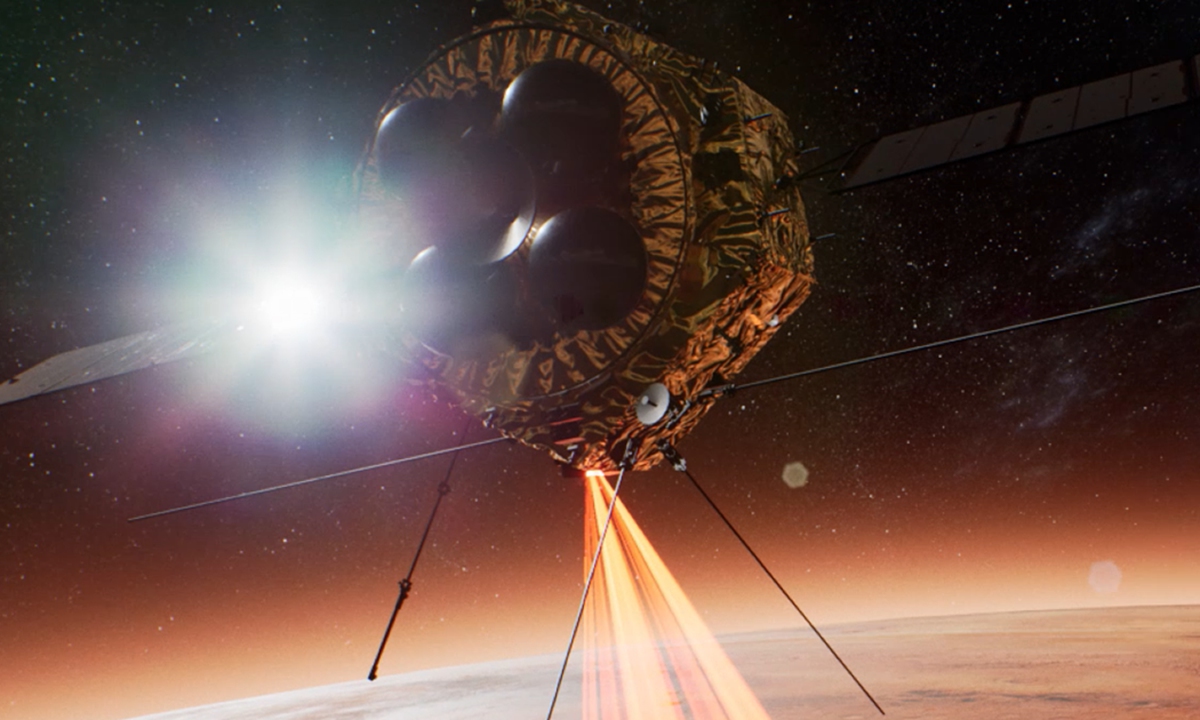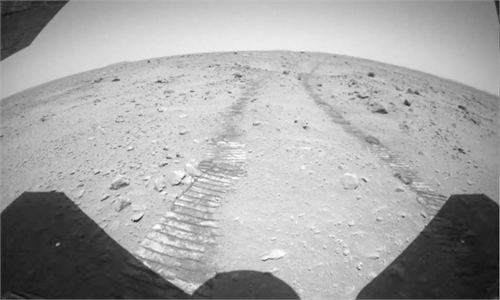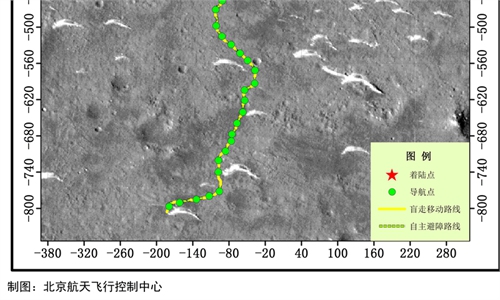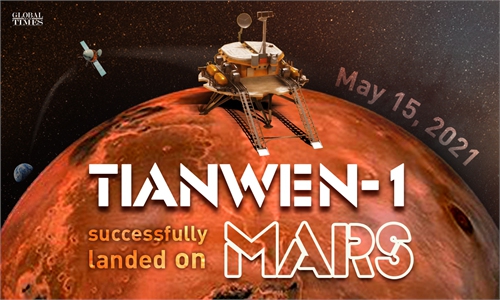SCI-TECH / AIR & SPACE
Tianwen-1 Mars probe enters final mission of global remote sensing

Illustration of the Tianwen-1 orbiter in the remote sensing orbit Photo: CASC
China's first interplanetary probe mission has come to its final stage of global remote-sensing exploration of the Red Planet after the Tianwen-1 orbiter successfully completed its fifth brake and entered a new mission orbit automatically late Monday, according to project insiders on Tuesday.
Four 102N engines worked for 260 seconds, reaching a speed increment of 78 meters per second for the late Monday maneuver of the Tianwen-1 orbiter, Global Times learned from the orbiter development team with the Shanghai Academy of Spaceflight Technology of the state-owned China Aerospace Science and Technology Corporation (CASC).
The Tianwen-1 probe has so far completed all preset mission stages including being captured by Mars' gravity, the orbiter-lander separation, the landing of the Zhurong rover, and the roving and exploration of the rover. It has come to the final stage of global remote sensing, the academy said in a statement it provided to the Global Times.
The obiter development team also revealed that to achieve the global remote sensing of Mars, the new orbit would be an elliptical one with a height of about 260 kilometers near point, a height of about 10,000 kilometers at the far side with an inclination of about 87 degrees.
It is different from the previous relay orbit in which the orbiter could go around Mars three times every Martian day, enabling it to provide two times of relay communication for the rover every day when flying over the landing site.
The new remote sensing orbit is shorter in which the orbiter could fly around the Red Planet 3.47 rounds every day, and could achieve a probe of global coverage in 200 days.
In the final stage, the seven scientific payloads on the Tianwen-1 orbiter will obtain scientific data related to morphology and geological structure, surface material composition and soil type distribution, the atmospheric ionosphere and the space environment of Mars.
And the orbiter will work in the new orbit for another 14 months while continuing to provide relay communication service to the Zhurong rover.
As of Monday, the orbiter has worked in orbit for 473 days. The Zhurong rover has worked on the Martian surface for 174 Martian days, with a total distance of 1,253 meters.
The two are in good condition and all systems are working normally, the China National Space Administration said.




